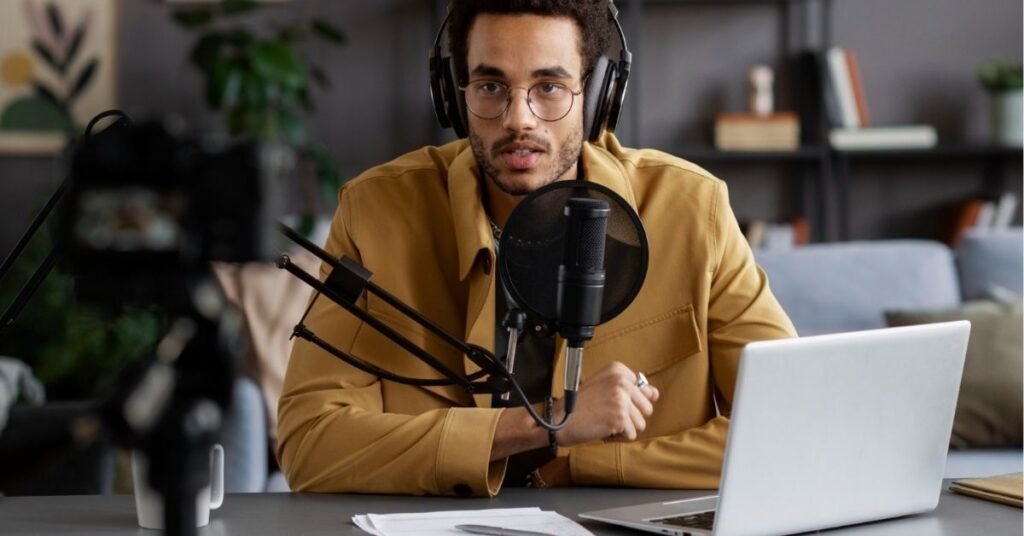Sitting in a lecture hall or joining an online class, students often face the same problem: How do I keep up with everything the professor is saying?
No matter how fast you write or type, important details slip away. That’s why recording lectures has become a game-changer for modern students. With the right tools, you can:
- Capture the lecture in real time.
- Review difficult sections as often as needed.
- Focus more on understanding instead of frantic note-taking.
- Build a personal digital library for revision and exam prep.
But the challenge is finding the best way to record lectures for students. Should you use a smartphone, laptop, dedicated recorder, or online software? And are there effective free methods?
This complete 2025 guide breaks it all down—covering the best tools, free options, online solutions, study strategies, and practical tips for students.
Why Recording Lectures is Important for Students
Before jumping into tools, it’s worth understanding why lecture recording is so powerful:
- Better focus during class: You can listen instead of stressing over every detail.
- Stronger retention: Listening again reinforces learning.
- Accessibility: Helps students with learning differences or non-native English speakers.
- Exam prep: Reviewing recordings is like attending the lecture twice.
- Flexibility: Missed a class? Recordings save the day.
Best Way to Record Lectures for Students
There isn’t a single “best” method—it depends on your device availability, budget, and study habits. Below are the top options:
1. Recording with Smartphones
Smartphones are the go-to tool for most students.
- Built-in apps: iOS has Voice Memos, Android has Voice Recorder.
- Third-party apps: Easy Voice Recorder, Smart Recorder.
Pros:
- Convenient and always with you.
- Decent audio quality in small classrooms.
- Easy to share recordings via cloud.
Cons:
- Battery drains quickly.
- Struggles in large lecture halls with echo.
Tip: Place your phone near the lecturer, not on your lap.
2. Laptop Recording with Built-In Software
Most laptops come with free recording tools.
- Windows: Voice Recorder app.
- Mac: QuickTime Player.
Pros:
- Larger storage.
- Easy to type notes while recording.
- Organized file management.
Cons:
- Less portable.
- Keyboard typing sounds may interfere.
Tip: Use a USB microphone for cleaner sound.
3. Digital Voice Recorders
Dedicated recorders are designed for long, clear audio capture.
- Ideal for medical, law, or engineering students in large halls.
Pros:
- Superior audio clarity.
- Long battery life.
- Some have noise reduction and transcription.
Cons:
- Extra device to carry.
- Requires file transfer to computer.
4. Smart Note-Taking Apps
Why record separately when you can combine notes + audio?
- OneNote: Records and syncs with notes.
- Notion: Embed audio alongside study material.
- Otter.ai: AI-based transcription and audio recording.
Pros:
- Organized digital study system.
- Cloud syncing for access anywhere.
- Transcription saves time.
Cons:
- Learning curve.
- May need internet for some features.
5. Specialized Lecture Capture Tools
Some universities provide systems like Panopto or Echo360 that auto-record lectures.
- Great for students who want professor-approved recordings.
Best Way to Record Lectures for Students Free
Students love free tools—and luckily, there are plenty of reliable ones:
1. Free Smartphone Apps
- Voice Memos (iOS)
- Easy Voice Recorder (Android)
2. Google Recorder (Android Only)
- Records + transcribes in real-time.
3. Audacity (PC/Mac)
- Open-source, free, and powerful for editing recordings.
4. Free Note-Taking Apps
- Microsoft OneNote (Free plan)
- Evernote (Basic)
5. Online Voice Recorder Websites
- Record directly from a browser—no download needed.
If you’re on a budget, these free methods are more than enough for quality recordings.
Best Way to Record Lectures for Students Online
With hybrid and online learning becoming standard, students also need tools for virtual lectures.
1. Built-In Recording in Platforms
- Zoom: Local/cloud recording (if allowed).
- Microsoft Teams: Records + transcripts.
- Google Meet: Recording available for education accounts.
2. Screen Recording Software
- OBS Studio (Free): High-quality video + audio.
- Loom: Screen + webcam + audio.
3. Browser Extensions
- Screencastify (Chrome): Records online lectures easily.
4. Cloud Note-Taking Apps
- Notion + audio embeds.
- Google Keep voice notes.
Classroom vs Online:
Which Recording Method Works Best?
| Situation | Best Method | Why |
|---|---|---|
| In-person, small classroom | Smartphone recorder | Portable, simple |
| In-person, large lecture hall | Digital voice recorder | Clearer audio, noise reduction |
| Online class (Zoom/Teams) | Built-in recording or OBS Studio | Captures both audio + visuals |
| Hybrid learning | Note-taking app with recording | Keeps notes + audio together |
Tips for Recording Lectures Effectively
- Sit close to the lecturer for better sound.
- Use an external microphone when possible.
- Back up recordings on Google Drive or Dropbox.
- Rename files immediately (e.g., History_2025_Feb12).
- Combine with notes—don’t rely solely on recordings.
Legal and Ethical Considerations
- Ask permission: Some professors require consent before recording.
- Use recordings for personal study only: Sharing without approval may violate policies.
- Be respectful: Avoid recording private student discussions.
How to Use Recorded Lectures for Studying
1. Active Review
Listen in short sessions instead of replaying the whole lecture.
2. Create Summaries
Write one-paragraph summaries after each recording.
3. Use Transcription Tools
Otter.ai, Sonix, or Google Recorder help turn audio into searchable notes.
4. Make Flashcards
Turn recordings into key concepts with Anki or Quizlet.
5. Listen During Downtime
Commutes, workouts, or chores = perfect review time.
Future of Lecture Recording: AI and Smart Tools
- AI transcription will make lectures searchable.
- Smart notebooks (like Livescribe pens) already record + digitize notes.
- Voice-to-slide syncing could soon link audio to lecture slides automatically.
Pros & Cons of Recording Methods
| Method | Pros | Cons |
|---|---|---|
| Smartphone | Easy, portable, free | Battery issues, background noise |
| Laptop | Large storage, multitasking | Less portable, typing noise |
| Voice Recorder | Best quality, long battery | Extra cost, extra device |
| Note Apps | Notes + audio together | Needs setup |
| Online Tools | Great for remote learning | Dependent on permissions |
Conclusion:
The best way to record lectures for students depends on your environment and study style:
- Smartphone apps work well for everyday use.
- Voice recorders shine in large halls.
- Laptop/online tools are perfect for digital classes.
- Note-taking apps help organize everything in one place.
The key isn’t just recording—but reviewing recordings wisely. Use them to reinforce learning, fill gaps, and prepare confidently for exams.
FAQs:
Q1. What’s the best free app for recording lectures?
Google Recorder (Android) and Voice Memos (iOS) are top free choices.
Q2. Is it legal to record lectures?
Usually yes, for personal academic use. But always ask your lecturer first.
Q3. How do I improve recording quality in large halls?
Sit near the front, use a digital recorder, or attach an external mic.
Q4. Can recordings replace note-taking?
No. Recordings are a supplement, not a substitute. Active note-taking boosts retention.
Q5. What’s the best method for online classes?
Use Zoom/Teams recording if allowed, or third-party tools like OBS Studio.
Q6. How should I organize my lecture recordings?
Rename files with subject + date, store in cloud folders, and link with notes.
Q7. Are AI transcription tools worth it?
Yes—Otter.ai or Google Recorder make studying faster by turning audio into text.


